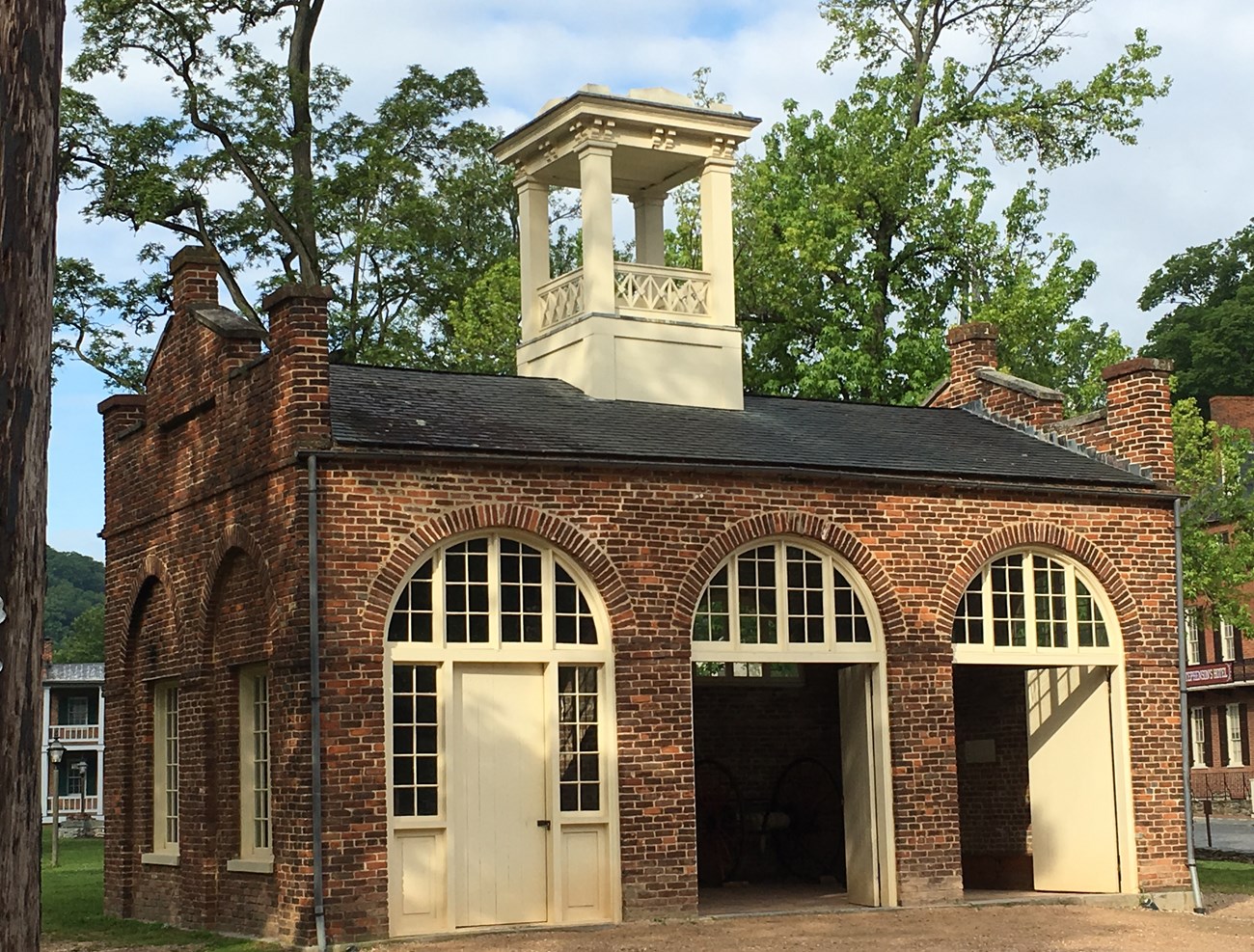Last updated: August 3, 2021
Thing to Do
Visit John Brown's Fort

Thirty-six hours after the raid begun, with most of his men killed or wounded, Brown was captured in the Armory fire enginehouse (now known as "John Brown's Fort") when U.S. Marines stormed the building.
Pets are not allowed inside of the building.
Entrance Fees for Harpers Ferry NHP
Park passes may be purchased at the Cavalier Heights Entrance Station near the park's Visitor Center, Bolivar Heights, Maryland Heights, Harpers Ferry Train Station, and River Access Parking Lot. Credit cards are accepted only at the Entrance Station. Passes may also be purchased online.
Vehicle Pass - $20.00 per single, private vehicle (excludes group tours and 7+ passenger vans - visit the Group Fees and Reservations page for more information).
Motorcycle Pass - $15.00
Individual Pass - $10.00 per person arriving on foot or bicycle
Harpers Ferry Annual Pass - $35.00 - valid for one year from month of purchase for Harpers Ferry NHP only. Admits pass-holder and passengers in a single, private vehicle (excluding groups) or immediate family if entering by other means. Nontransferable. Can be purchased at the Cavalier Heights Entrance Station near the Visitor Center.
John Brown's Fort is accessible to all visitors.
The Lower Town area of Harpers Ferry does have some uneven and textured surfaces. All visitors should watch their footing while exploring the town.

NPS Photo/Autumn Cook
To access John Brown's Fort from the Lower Town shuttle bus stop, walk along the sidewalks of Shenandoah Street toward the buildings. John Brown's Fort is the last building on the right side of the street. It is open to the public during park hours.
The structure we now call John Brown’s Fort was erected in 1848 as the Armory’s fire engine and guard house. The building was described in a June 30, 1848, Armory report as “an engine and guard-house, 35½ x 24 feet, one story brick, covered with slate, and having copper gutters and down spouts, has been constructed, and is now occupied.” It was in this building that John Brown and several of his followers barricaded themselves during the final hours of their ill-fated raid of October 16, 17, and 18, 1859.

Library of Congress Prints and Photographs Division

Harpers Ferry NHP Historic Photo Collection, Catalog #HF-00220
After John Brown's Raid
During the Civil War, the John Brown Fort was used as a prison, a powder magazine, and perhaps a quartermaster supply house. Union troops admired the fort as they passed while Confederate troops cursed it. Many troops broke pieces of brick and wood off the fort as souvenirs. It was the only Armory building to escape destruction during the Civil War.
In 1891, the fort was sold, dismantled and transported to Chicago where it was displayed a short distance from The World’s Columbian Exposition. The building, attracting only 11 visitors in ten days, was closed, dismantled again and left on a vacant lot.
How did the building return from Chicago?
In 1894, Washington, D.C. journalist Kate Field, who had a keen interest in preserving memorabilia of John Brown, spearheaded a campaign to return the fort to Harpers Ferry.
Local resident Alexander Murphy made five acres available to Miss Field for the cost of $1, and the Baltimore & Ohio Railroad offered to ship the disassembled fort to Harpers Ferry free of charge. In 1895, John Brown’s Fort was rebuilt on the Murphy Farm about three miles outside of town on a bluff overlooking the Shenandoah River.

Photo from Survey HABS WV-21-5; Historic American Buildings Survey (Library of Congress)

Harpers Ferry NHP Historic Photo Collection, Catalog #NHF-3155
John Brown's Fort at Storer College
In 1903, Storer College began their own fundraising drive to acquire the structure. In 1909, on the occasion of the 50th Anniversary of John Brown’s Raid, the building was purchased and moved to the Storer College campus on Camp Hill in Harpers Ferry.
It was used as a museum and many students were required to give tours of the museum to strengthen their public speaking skills.
After Storer College
Acquired by the National Park Service in 1960, the building was moved back to the Lower Town in 1968.
Because the fort’s original site was covered with a railroad embankment in 1894, the building was placed about 150 feet east of its original location.
